Keep Reading
The Dark Side of Course Creation: Leaving ‘Fast Money’ Behind for Real Impact with Tarzan Kay
Tarzan Kay’s journey from the “make money online” hustle to building a business with heart is anything but conventional. After spending years in the affiliate marketing game and diving into the world of course creation, Tarzan learned firsthand the challenges of pricing, marketing, and creating a real impact – not just chasing dollars. Along the […]

Paragraph
Tarzan Kay’s journey from the “make money online” hustle to building a business with heart is anything but conventional.
After spending years in the affiliate marketing game and diving into the world of course creation, Tarzan learned firsthand the challenges of pricing, marketing, and creating a real impact – not just chasing dollars. Along the way, she found herself navigating the messy realities of launching products, the pressure of slick sales funnels, and the harsh truth that not every business model is sustainable or aligned with her values.
Through it all, Tarzan discovered the power of building trust through email marketing and the importance of consent-based marketing, turning her business into something that actually feels good.
This isn’t just a story about making it big—it’s about unlearning harmful marketing tactics, embracing authenticity, and finding success on your own terms. The Unseen Realities of Course Creation, Pricing, Marketing, and the Power of Email— it’s all in today’s show!
APPLE PODCASTS | SPOTIFY
Press play for the full interview or keep reading below!
- [00:00]: Introduction to Tarzan Kay and His Business
- [03:05]: The Concept of Consent-Based Marketing
- [06:11]: Tarzan’s Journey: From Law School to Copywriting
- [09:01]: Building Authority and Visibility in Email Marketing
- [11:54]: Pricing Strategies and Ethical Considerations
- [15:01]: The Shift from One-on-One Work to Courses
- [18:02]: Early Successes and Challenges in Business
- [21:01]: The Importance of Hiring and Team Dynamics
- [23:57]: Reflections on Marketing Practices and Course Launches
- [31:18]: The Shift from Affiliate Marketing to Personal Branding[
- [33:01]: The Impact of Identity in Business
- [37:16]: Consent-Based Marketing: A New Approach
- [39:28]: Navigating Business Convictions and Sacrifices
- [46:53]: The Importance of Financial Support and Mentorship
- [49:39]: Finding Harmony Between Work and Life
- [52:22]: Quickfire Insights and Reflections
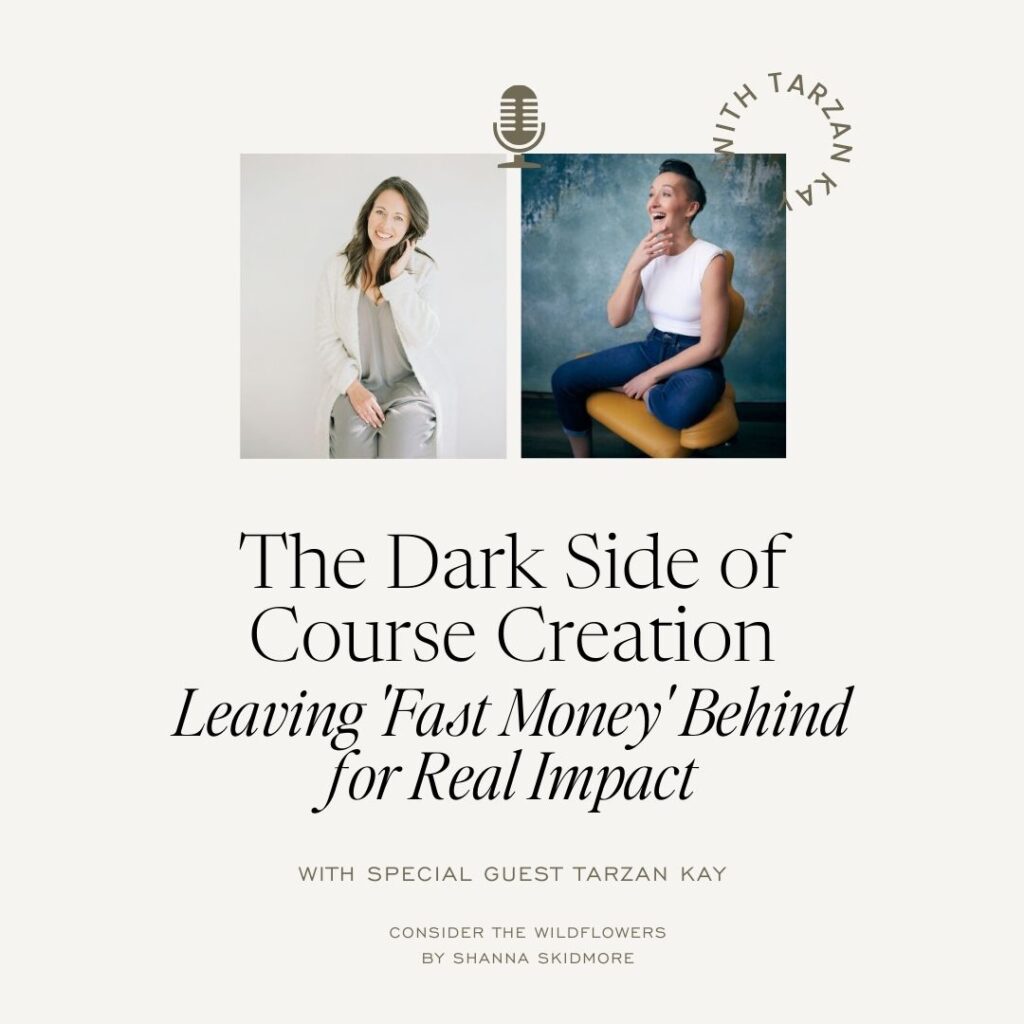
Who is Tarzan Kay?
My name is Tarzan Kay, and I run a newsletter called Emails but Better. It’s for people who sell things online and want to do it in a way that actually feels good. A lot of people talk about ethical marketing or ‘non-skeezy’ selling — we have all these buzzwords, but most people don’t really know what they mean or what ethical selling actually looks like in practice.
From my perspective, it’s about looking at everything through the lens of consent. I teach a lot about consent-based marketing — specifically, how to approach email marketing in a way that respects people’s autonomy. So that when someone sees an email from me, they think, ‘Oh yay, an email from Tarzan!’ instead of that dreaded feeling like, ‘Ugh, Tarzan again. Why am I even getting this?’
Emails but Better isn’t just business stories — it’s a whole experience in what consent-based marketing can actually look and feel like, and it’s very different from what most people expect from traditional marketers.
How Tarzan Kay Got Started
For most of my life, I really didn’t know much about money — and honestly, I was pretty scared of it. My family had enough; we never went hungry, we were okay. But I could tell my parents were stressed about money, and it always seemed like other people had more. Other families were able to do things we couldn’t.
I grew up in this pretty ritzy town — Niagara-on-the-Lake in Ontario — and we happened to live in a house my dad had bought decades earlier. Then the neighborhood took off, and the town became a tourist destination. It’s beautiful — right on the water, with a big theater company — and a lot of wealthy families live there.
So I grew up thinking we were poor, even though in hindsight we were middle class. But money always felt stressful, and I just didn’t know how I was going to make my life work.
That said, I had a pretty great life. I went to university, got good loans and bursaries because I studied in Quebec — which, by the way, is an amazing place to study. There’s a lot of financial support available, and tuition is way more affordable there, especially compared to other places.
I finished my first degree with only $18,000 in debt — which, I know, sounds unbelievable — and then I did another degree. I went to law school for three years, and somehow, after seven years of university, I left with less than $30,000 in total debt. Even with law school — it’s wild!
Tarzan’s Journey After Law School
Yes, I worked my way through school. I had bursaries and loans, but they weren’t enough to live on, so I always had to work part-time throughout university. I remember feeling really jealous of my peers who didn’t have to work or who had support from their parents — which just reinforced this idea I had that everyone else had more than me. But looking back, I was fine. I was fortunate. I was really blessed.
So, I came out of university, dropped out of law school, and thought, ‘Okay… now what?’ I didn’t know what I wanted to do with my life, but I’d always known I wanted to be a writer. I just couldn’t picture what that would actually look like as a career. I’d figured out early on that people who write books don’t necessarily make a living from them, so it didn’t seem like a viable path.
Still, I tried — and somehow, I stumbled into copywriting. I thought, ‘Okay, this could actually be something.’ I’d done a bit of freelance work before, and then in 2016, I made it official and started my business.
At the time, my partner and I had just had a baby, and we made a big decision — my partner would stay home with our child, and I’d work full time. That was a huge gamble. I didn’t really understand money or business, but I’d had just enough success with freelancing that I could see a path forward.
So in January 2016, I rented an office. I showed up nine to five, Monday to Friday, and treated it like a real job. I thought, ‘This is what it takes — let’s go.’ I bought an online program, and pretty quickly I realized there was a niche in the copywriting space I could really lean into. That course connected me to people who needed copywriters, and I started to see the path clearly.
Getting into email copywriting
Within six months, I realized email copy was something I loved — and was naturally good at — so I picked a niche early. Maybe six or seven months in, I started specializing in email. I also started building my own list right away. The course I took said, ‘You have to start an email list,’ so I did. It’s honestly the only time I’ve followed an online course to a T — I watched every module, did every exercise. And it worked.
That was 2016. I started my email list, and not only did I feel good at email, I genuinely loved writing them. From there, I started doing a lot of smart things to build my visibility and authority, and I quickly became known — in my small pocket of the internet — as the person to go to for email copy.
Eventually, I transitioned into courses. I think by early 2018, I was launching my first one. Looking back, maybe I wasn’t quite ready — but I recently watched my first email course again, and I thought, ‘You know what, Tarzan? This wasn’t garbage. It was actually pretty solid.
Why Tarzan Kay Started Writing Email Copy
I figured out pretty quickly that the biggest ROI for clients came from promo emails. I could write sales emails and they’d see an almost immediate return on investment.
Personally, I have only ever had one client whose weekly newsletter I wrote — other than that, I’ve never really written nurture emails for people. Even though they’re important, back then there just wasn’t much demand for them. At the time, newsletters were considered the filler content between launches, so it didn’t make sense for clients to invest in them.
So I focused on sales emails — things like sales funnels, webinar invites, show-up emails, promo sequences, and sometimes onboarding emails as a bonus add-on. But the core of my work was always sales copy.
Deciding on Pricing for Email Marketing
My pricing has always been based on demand, not on what I think the market will bear. I think that mindset often leads people to price either way too high or just aim for the quickest ‘yes.’
Because of the visibility work I was doing — which I’ll get to — there was steady demand for my services. So I just kept raising my prices to a level that made sense based on that demand.
For example, if I could charge $2,500 for a sales page and an email sequence, and that work would take me about two weeks, that felt like a fair trade. It also meant I still had time left over to focus on marketing and growing my own business.
I think a lot of us underprice ourselves because we’re not factoring in all the extra hours — like the time we spend marketing or building the business — into our pricing.
Pivoting into Digital Courses and Considering the ROI
A major tipping point for me came when I started shifting into courses. I realized that the amount people were willing to pay me — and what I’d actually need to charge to make it comparable to more scalable offers — was so high that most clients wouldn’t get a return on investment.
Like, let’s say someone comes to me and they’ve never launched a course before, and they want me to write their sales page and emails. That’s going to cost at least $5,000. But if it’s their first launch and they don’t have proof of concept yet, they might not make that money back — and I didn’t feel good about taking someone’s money in that situation.
That’s when I started moving toward more scalable offerings. I’ve always thought about pricing in terms of ROI — not just for me, but for the client, too.
There was definitely a time in my business when I let my ego run the show. I thought I was the greatest, and I charged accordingly. I’d say things like, ‘It’s $10,000 for one day of my time — because I can.’ And I did that for a while. But honestly, it didn’t feel great.
Eventually, I took a step back and thought, ‘Okay, the price has to make sense for me, but it also has to make sense for the client.’
There’s a huge responsibility in online business because people are so oversold on how much their life is going to change or how much money they’re going to make from a course. So when someone comes to me, they’re often riding this wave of hype — someone told them they’re going to have a million-dollar business. And I could totally ride that wave too and say, ‘Great, let’s go! I’ll write this incredible copy for you, and it’ll cost $10,000.’ But at the end of the day, I might hand over three half-finished pieces of copy — and they’d still say yes.
And for a while, I did say yes to that kind of work… until I realized — this isn’t ethical.
Tarzan Kay on Launching an Online Course
One thing I don’t think I’ve ever heard anyone else say — but I say it all the time — is that to be successful online as a course creator, you have to be good at a lot of things. Unless you’ve got a ton of money to pour into something that may or may not work, you need to wear a lot of hats.
You have to be good at writing. You have to be good at design. Plus, you have to be good at selling, presenting, creating offers — and listening.
There’s just so much involved. I’ve seen people come into this space from corporate — total superstars — and they absolutely crush it because they’re used to high performance and climbing the ladder.
But if you’re missing even one of those core pieces, it can make things really hard. And sometimes, it’s the difference between success and failure.
Setting Financial Goals in the Beginning
Yeah, that’s a great question. I don’t think I really knew how to set a financial goal in the beginning — but I did track everything. In my first year, I literally had a Google Doc spreadsheet where I’d log how much money I made and how much I spent.
I do remember having a minimum number in mind — just enough to support our household. Plus, I wasn’t really thinking yet about business expenses or profitability, but I did know what we needed to get by at home.
I really loved my work right from the beginning, and I started making money pretty quickly — which was so exciting to me. Before starting my business, the most I’d ever made in a year was $15,000. And honestly… I even cheated on my taxes because I didn’t have the money to pay them. I had never paid taxes in my life, and I was probably around 29 at the time. (It’s past the seven-year limit, so I feel like I can say that publicly now!)
But it was such a thrill to finally be doing something I was actually good at. I’d never really found ‘my thing’ before, and suddenly I was getting recognized for my work — and paid for it. It felt incredible.
In my first year of business, I made $60,000 — more money than I had ever imagined making — and I probably took home at least $50,000 of it. I didn’t have a lot of overhead back then. My second year in business, I made $240,000. My third year? $400,000.
It definitely changed me. In some ways, my ego got a little out of control for a while. But mostly, I was just in total disbelief. I was like, ‘You guys, look how much money I have! I can’t even believe this is happening to me.’ It was more money than I had ever dreamed of making.
Having a Team to Support Your Business
I didn’t do this all on my own — I’ve almost never been a one-person operation.
One of the most important things I did in my first year was hire a virtual assistant. Her name is Sandra, and we’re still working together today. She’s truly my right hand. We’ve been through so much together — especially in the last few years, which have been harder. We’ve spent hours pouring over cashflow statements, making tough decisions, and navigating challenges.
When I first hired her, it was for 10 hours a week at $500 a month — and I was terrified to make that commitment. But over time, our relationship grew. There were moments when I tried to hire her as a full-time employee or even make her a business partner. She always declined — she wanted to keep her independence — but we’ve continued to grow the business side by side.
Honestly, when I look back at the most impactful decisions I’ve made in my business, hiring Sandra is number one. She always has my back. Even now, I don’t spend money without talking to her first. I actually spent $2,000 this week and jumped on a cashflow call with her like, ‘Sandra, I spent $2,000!’
We even have a rule — no ‘black ops’ spending. I’m not allowed to go rogue and make purchases without telling anyone.
Back before I officially launched my business in 2016, I was doing freelance work and was part of this coworking group. We’d meet at a café with our laptops, and most people were just there to chat — but Sandra and I were the ones actually working. That’s how we connected.
A couple of months into starting my business, I asked her to help with a small email-related task — I needed to connect my popup form to MailChimp — and she sent me her first invoice: $35. She even waived the rush fee! We still laugh about it, because now neither of us would ever do a $35 task — let alone send an invoice for one. But that was the beginning, and we’ve been through a lot together since.
Early Days of Marketing
Very early on, I started speaking at events and on podcasts — I was really consistent about that. I had one client who was pretty well known in the online business world, and I pitched her. First, I said, “Hey, I’m writing for you — can I come to your event?” She said yes, so I paid my own way — hotel, flight, everything — just to be there, hang out with her, and meet her people.
Then the following year, I asked if I could speak at her event, and again, she said yes. Not only that, but she gave me an incredible introduction from the stage. I walked out there like a total superstar — everyone in the room wanted to hire me. I knew how powerful that moment would be, so I also invested in it and I paid someone $5,000 to help me develop and polish that talk. That way, I had a professional, reusable keynote I could take elsewhere.
After that, I spoke at events for ConvertKit, Infusionsoft, and others — mostly pre-pandemic — and all of it built a ton of authority and credibility. When people see you on stage next to someone who’s way more famous, it doesn’t matter — the audience sees you in the same category. That kind of visibility was huge for me.
Building Authority in the early days
Another thing that really helped build my authority early on was having beautiful branding and professional photos. My first website was DIY and decent enough, but as soon as I could afford it, I hired someone to design a professional site. The messaging wasn’t perfect, but it was good enough, and it made me look polished and credible.
Honestly, I hope your listeners go check out my website now — it’s the best one I’ve ever had. Everyone who sees it says, “Oh my god, Tarzan — your site is so clear, beautiful, and full of personality.” It took six or seven years of business to get to that version, but it was worth it.
And while I don’t consider myself a designer, I’ve learned a lot over the years and now I actually enjoy doing a lot of my own design work. It saves me money, and it’s fun. But even in the early days, I made sure to hire someone to create solid brand assets — so I wasn’t starting everything from scratch.
Wrestling with Unethical Marketing
As for what didn’t go so well… well, that could be a whole separate podcast. I’ve spent a lot of time making peace with and atoning for some of the ways I used to market. I’m not interested in endlessly apologizing anymore — I’ve done the work. But I’ll be honest: I definitely got sucked into that ‘make-money-online, private-jet lifestyle’ kind of marketing.
I used a lot of tactics that I now see as highly coercive. I sold big dreams, hyped transformation, used countdown timers — all the stuff that makes people feel like their life will magically change if they just say yes. That’s the kind of marketing I had to unlearn.
I followed the systems that were taught to me — and they worked. Before I even launched my own courses in 2018, I did a lot of affiliate marketing. I was selling other people’s programs, and the thing about affiliate marketing is that it often involves a lot of pressure to sell.
B-School is a great example — and to be clear, I’m actually a B-School success story. It was the first program I ever took back in 2016, and it really helped me. So this isn’t me saying B-School is bad — it’s a solid program, or at least it was when I took it. But the system around it is intense.
You’ve got people going through a high-pressure sales funnel — there are fast-action bonuses, big promises, success stories, and this subtle shame around having a ‘regular’ job. And then, on top of that, there are affiliates like me — and ten other people — all competing for commission. We’re all shouting about how amazing this course is, trying to outdo each other with extra bonuses so you’ll buy it from us instead of someone else.
And honestly, maybe you don’t even need the thing — but the pressure is on. Even before I started selling my own courses, I was part of that machine, and I made a lot of money doing it. In fact, in the first few years of my business, I made way more from affiliate marketing than I did from my own offers.
Moving Away from Affiliate Marketing
So the first step I took in moving away from that was deciding to take a full year off from affiliate marketing. I was only going to sell my own stuff.
I started realizing that promoting other people’s stuff felt a little like working for clients again. At the time, I was spending so much time hyping someone else’s offer when I had my own list of people who wanted to hear from me — who wanted what I had to say. I wanted to be Tarzan, talking about my own work, not someone else’s product.
Plus, I also hated the leaderboards. Even when I was on them, it made me feel weird — too competitive, and like I was doing things I didn’t really feel good about. I was starting to see the cracks in the system.
A major turning point for me was when I hosted a live event — the kind I’d seen a million times before. Everyone flies in, you put on a big show, and then you pitch your $10,000 offer from the stage. The classic playbook. I don’t think I literally made people run to the back of the room, but it was that vibe.
Tarzan Kay On The Most Important Email She’s Received
After that live event, I received an email from one of the attendees who had applied for our $10,000 mastermind — and honestly, it was the most important email I’ve ever received in my life.
She wrote, “I’ve never sent a message like this before, but I’d like to withdraw my application. And I want to share my experience of your event as a brown Muslim woman.”
She pointed out things I was completely unaware of — like the fact that the lineup of speakers was all white, slim, attractive women who all looked very much the same. She said it with such grace and clarity. I think the letter is still somewhere on my website. But the heart of it was: “You have a blind spot. You’re not seeing this. And the world looks very different for people who don’t share your identity. I don’t want to work with someone who isn’t aware of that.”
This was in 2019, before these conversations were more common in the online business space. And it hit me — hard. Until that point, I had truly believed that success was 100% replicable: if you just do what I did, you’ll get the same results.
But that email made me realize that there are so many aspects of my identity that made it easier for me to succeed — things like being white, slim, conventionally attractive, articulate on stage. People trust me more because of how I look and show up in the world. I couldn’t ignore that anymore — especially if I was going around telling people, “You can have what I have if you just follow my system.”
The truth is, I had already seen so many people try to follow the exact same steps and still crash and burn. And the common explanation in this industry is, “Oh, you have a mindset problem,” or “You didn’t execute the system properly.” And yes — sometimes that’s true. But there’s also a whole other layer no one talks about, and that email opened my eyes to it.
.
Shifting Towards Consent-Based Marketing
It wasn’t an immediate shift, but that letter changed the direction of my business. One of my first steps was deciding to stop doing affiliate promotions. Over the years, I kept digging deeper: What are these layers of persuasion we’ve been taught? This isn’t just marketing — this is coercion. So I started asking, “How do we build in more consent?”
That question has driven my work for the last four or five years. It took time for me to come to the concept of consent-based marketing. I had to learn what consent really means — in my life, in my business, and in how I sell. I looked at how others were doing it, and started building a real solution.
Because here’s the thing: a lot of people say, “This kind of marketing doesn’t feel good,” but then they’re told that’s just a mindset block. I don’t agree. I don’t think discomfort with coercive marketing is a mindset issue — I think it’s your integrity speaking. And if something doesn’t feel good to you, you won’t be able to do it over and over again. That means your business won’t be sustainable.
So we’ve started baking consent into everything we do. For example, if you’re on my email list, you can opt out of promotional emails — you don’t have to get them. I still do open-and-close cart promotions where I might send 10 emails in a week, but every single email has a link right at the top that says, “Click here if you don’t want to receive promo emails.”
You can even hide countdown timers. Some people love them — others find them triggering. We give people the choice.
What I’ve found is that the people who opt in — the ones who stay — are much more engaged. They show up, they come to calls, and they do the work. That’s because they chose to be there — not because they were manipulated into saying yes by a scarcity play or a shiny promise. And that makes all the difference.
Changing The Way Tarzan Kay Is Doing Business
Yeah, I mean, it’s hard to say for sure, but here’s something not everyone realizes — selling courses used to be a lot easier. I feel like I need to say that out loud more often. In the industry, we even joke about our ‘2020 money’ — like, wow, remember those days? 2020 was kind of the golden era for course creators. Everyone was home, spending their stimulus checks on online courses.
But yeah, it’s gotten a lot harder in the last few years, for a lot of reasons. Honestly, we could do a whole podcast just unpacking that. But the reality is: selling courses is harder now.
My business is less profitable than it used to be. I still have a great salary, but back in those glory days — it was wild. It felt like money was just flying out of my pockets. Everything was so abundant.
Sometimes I wonder… if I were still using all those high-pressure strategies — the big transformational promises, the ‘get rich, it’s easy’ messaging — maybe I’d be making more money, like I was back then. I don’t know. But honestly, I’ve also noticed those strategies don’t work as well anymore. And the people who are still using them? They’ve doubled down — their sales funnels have gotten even more stressful, even more forceful.
So yeah, there’s been some revenue sacrifice. But I’ve gained so much more. I feel so much more present — with myself, with my customers. I enjoy my business so much more. But I don’t do webinars anymore. I don’t rely on the old hustle. One of my favorite ways to connect now is just replying to people’s email replies.
Wednesdays are my newsletter days, and sometimes I spend the entire day writing it. And honestly, that’s the career I wanted — to write. And now I have it. I’m so grateful. And I’m not the only one. A lot of my peers have downsized — some because they had to, and others because they just wanted something different. I know so many people who say, ‘Yeah, I make less money now… but I like myself and my life so much more.’
Making Money From Online Courses in 2025
About 90% of my revenue comes from courses. I’m really involved in them — very few are completely DIY. For the most part, I’m actively showing up and working with people.
The only one-on-one work I offer now is a three-hour newsletter intensive. Clients can come in and get something really specific done in that focused time, and that’s the only way I work one-on-one these days. I just introduced it this year, and honestly, I really like it.
Tarzan Kay on The Best Thing She’s Learned About Money
The best thing I’ve learned about money is that you really can’t do it on your own. When it comes to finances, we need people we trust — people who can help us look at the numbers, talk through spending decisions, and give us some perspective.
My financial life became so much richer once I started seeking mentorship and support. I’m lucky — my mom was a certified financial planner, so even when I first started my business, we were already having those financial planning conversations.
One of my very first hires was a bookkeeper. I’ve had one since probably seven months into my business. I realized pretty quickly: I suck at bookkeeping, and I hate doing it. I don’t even want to think about it — I can’t even talk about it without cringing.
But seriously, having support and accountability is so important, especially for business owners. I’ve seen so many people — particularly coaches who charge massive amounts of money — make a ton of money really fast… and spend it just as fast. Often those decisions are being made in a silo, with no one to help them gut-check anything.
I’ve always had Sandra. If I’m thinking about spending a few thousand dollars or more, I go to her. I already know the kinds of questions she’s going to ask — because we’ve worked together for eight or nine years — but I still bring it to her:
‘Here’s what I’m thinking of doing, here’s why, here’s what I believe it will do for the business… what do you think?’
And she’ll poke holes in it, help me see things I didn’t see. That kind of accountability has been invaluable.
I also learned pretty early on that I couldn’t really have those conversations with my partner. Not because he didn’t care — but because he just didn’t have the context for business finances or the comfort level with big numbers. That’s why it’s so important to have people you trust. You need people who can hold those financial conversations and help you make smart decisions.
Tarzan Kay on Finding Harmony in Life
Honestly, I’m kind of an extreme person — in every area of my life. I don’t really know how to not be extreme. A couple years ago, I got into sprint canoe, and this year I decided, ‘I’m going to win a gold medal at nationals.’ I didn’t win gold, but I did win a medal! I was out on the water practicing seven times a week.
Even when I start dating someone, one of the first things they usually say is, ‘Wow… you’re pretty intense.’
So, for me, harmony looks a little different. I’ve come to accept that this is how I operate — I go hard, I go all in. But I also make sure I’m taking care of myself. Nobody suffered while I was training like a maniac for my competition.
In fact, sometimes I actually find balance through being extreme. That’s just who I am — and I’ve learned to make peace with that.
More from this Episode
To hear the full story and more about Tarzan, press play on the player above for the full interview or click here to download the transcript.
 RESOURCES MENTIONED:
RESOURCES MENTIONED:
*Some links above are affiliate links which means I receive a small commission when you choose to purchase through my link. I only recommend tools I love and use myself!
_

Tarzan Kay
Tarzan Kay is a successful entrepreneur who made millions online by scaling highly successful launches for a digital program focused on email marketing. She built and led a world-class team, achieving the coveted 7-figure, work-from-anywhere lifestyle, and even had the opportunity to celebrate with industry leaders.
However, after reaching the pinnacle of digital success, Tarzan decided to take a step back and create something different—something smaller, more intentional, and centered around simplicity. Today, she runs small-group programs designed to teach business owners how to effectively nurture potential customers with story-driven email marketing and convert them through sales strategies that align with integrity and authenticity.
CONNECT WITH TARZAN:
March 27, 2025
Previous Post:
Next Post:
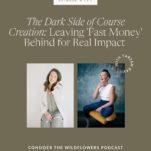

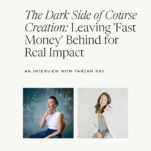
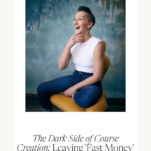
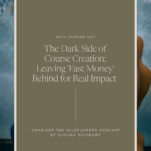
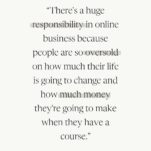
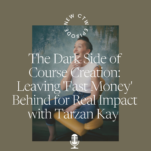
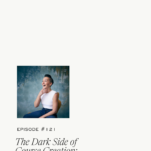
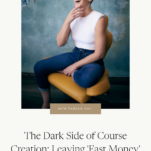

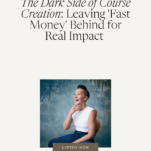

And if you found this helpful, share with your friends!